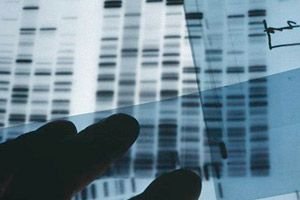
All iLive content is medically reviewed or fact checked to ensure as much factual accuracy as possible.
We have strict sourcing guidelines and only link to reputable media sites, academic research institutions and, whenever possible, medically peer reviewed studies. Note that the numbers in parentheses ([1], [2], etc.) are clickable links to these studies.
If you feel that any of our content is inaccurate, out-of-date, or otherwise questionable, please select it and press Ctrl + Enter.
Mutations in genes can cause fatal insomnia
Last reviewed: 02.07.2025
 ">
">According to scientists, each person has more than 50 mutations in genes that can cause the development of a serious disease and even death. But most often, these mutations do not manifest themselves in any way, and the person safely lives to old age. Spouses Sonia Vallabh and Eric Minikel decided to find out why mutations often do not manifest themselves; for Sonia, this study was vitally important, since she herself is a carrier of a mutation gene that causes the development of fatal insomnia.
A researcher's mother died of fatal insomnia several years ago, this disease is hereditary and the mortality rate is 100%. The disease does not manifest itself for many years and the first symptoms begin to appear around 50 years old, when most people already have children. The probability that the deadly gene will be passed on to children is 50%. The disease manifests itself in severe insomnia, in which various, even the most powerful sleeping pills are ineffective, the patient begins to suffer from panic attacks, and after a few months death occurs.
Scientists note that the cause of the disease lies in altered proteins (prions). Mutations occur in chromosome 20, in the PRNP gene, and only one amino acid is attached – asparagine. Prions multiply very quickly, which leads to the formation of amyloid plaques that accumulate in the part of the brain responsible for sleep. According to some experts, this is what leads to severe sleep disorders that are not amenable to modern treatment methods.
After losing her mother, Sonia Vallabh underwent genetic testing and learned that she could also die from fatal insomnia. At the time of the test, the girl was 26 years old and did not want to give up, together with her husband, she studied biology to learn everything about the hereditary disease and try to avoid a tragic end.
First of all, the couple decided to find out whether the presence of a mutation in a gene always provokes the development of the disease. As was clear from previous studies, many potentially dangerous mutations do not manifest themselves in any way. A large genetic study made it possible to collect a database of exomes of 60 thousand people, which helped to identify the frequency of mutations among different populations, as well as to find out which proteins are encoded and what their purpose is.
This database allows researchers to determine what disease a particular mutation will lead to. The D178N mutation is responsible for the development of prion diseases, which also include fatal insomnia.
3 years ago, Sonya studied stem cells, and her husband studied bioinformatics, they studied together at one of the Massachusetts hospitals. At that time, they met geneticist Daniel MacArthur, who took part in the creation of the database. Sonya's husband decided to join MacArthur's team to find out whether the mutations identified in his wife were actually life-threatening.
Since the database was completed in 2014, health professionals and scientists have recognized that it could indeed change the way we understand genetic risks. In August of this year, MacArthur and his colleagues published a paper in a journal stating that many gene mutations are harmless and that abnormal genes are common among healthy people.
Regarding the mutations in the PRNP gene, a separate study was conducted by Sonia and her husband, in which they studied the data of more than 15 thousand people suffering from various prion diseases and compared them with the data of people from the MacArthur database and other studies. 52 people with mutations in the corresponding genes were identified, which clearly indicated that prion diseases are quite common. But the D178N mutations were not detected in the control group, which means that the probability of Vallabh developing a fatal disease is 100%. The only chance of saving the girl is the development of an effective drug for fatal insomnia.
Sonia's husband, after studying the MacArthur database, discovered that the activity of mutation genes can be suppressed. According to Minikel, if a way can be found to prevent prion reproduction without disrupting the body's functions, the disease can be stopped. The couple is currently working with biochemist Stuart Schreiber and trying to create drugs to treat fatal insomnia. Vallabh, 32, has an average of 20 years to find a cure for the deadly disease.

 [
[